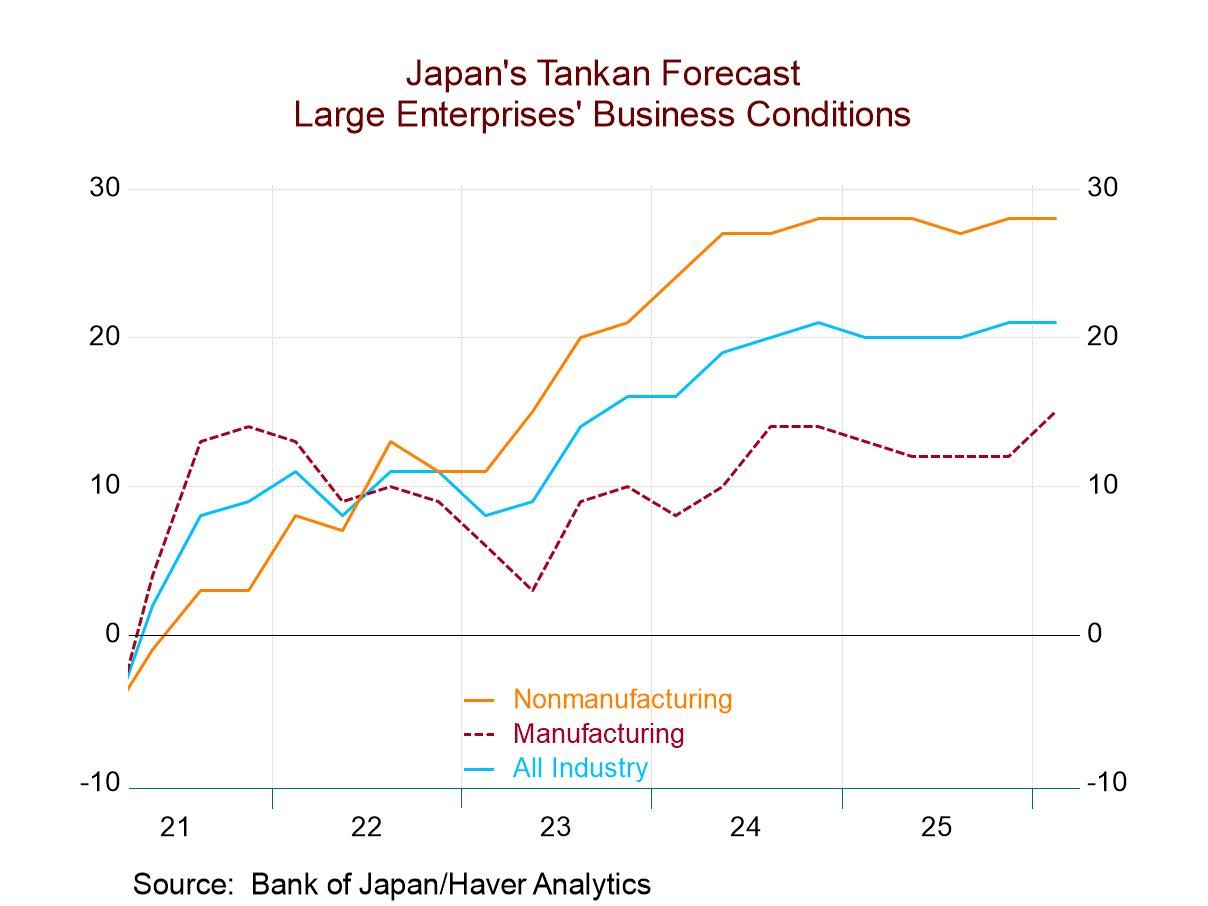U.S. Initial Unemployment Insurance Claims Rise Moderately in March 30 Week
Summary
- Initial jobless claims highest since late January.
- But continuing claims decrease somewhat in March 23 week.
- Insured unemployment rate still holds at 1.2%.


Initial claims for unemployment insurance rose 9,000 to 221,000 (2.3% y/y) seasonally adjusted in the week ended March 30 from 212,000 the week before; that earlier week was revised from 210,000 reported before. For the latest week, the Action Economics Forecast Survey had expected 214,000. The four-week moving average of initial claims was 214,250, up from 211,500 in the prior week.
Insured unemployment, also known as continued weeks claimed, was 1.791 million (5.1% y/y) in the week ended March 23, down from 1.810 million the previous week; that earlier amount was revised from 1.819 million reported initially. In the March 23rd week, the four-week moving average was 1,799.75 thousand, down marginally from 1,800.5 thousand the week before. Insured unemployment has thus maintained the tight range that has prevailed since last spring, except for three weeks around the turn of this year, when it touched a low of 1.728 million the week of January 6.
In the March 23 week, the insured unemployment rate was again 1.2%; that is the number of insured unemployment as a percent of covered employment. This has been at 1.2% continuously since the week of March 11, 2023.
Insured unemployment rates vary widely across states and territories. In the week ended March 16, the highest rates were in New Jersey (2.78%), California and Rhode Island (both 2.51%), Minnesota (2.29%), Massachusetts (2.26%) and Illinois (2.06%). The lowest rates were in Kansas (0.36%), Florida (0.38%), Virginia (0.41%), North Carolina (0.43%) and Alabama (0.44%). Other notable rates were in New York (1.94%), Pennsylvania (1.84%), Texas (1.13%), the District of Columbia (1.05%) and Louisiana (0.60%).
Data on weekly unemployment claims are from the Department of Labor itself, not the Bureau of Labor Statistics. They go back to 1967 and are contained in Haver’s WEEKLY database and summarized monthly in USECON. Data for individual states are in REGIONW back to December 1986. The expectations figure is from the Action Economics Forecast Survey in the AS1REPNA database.


Carol Stone, CBE
AuthorMore in Author Profile »Carol Stone, CBE came to Haver Analytics in 2003 following more than 35 years as a financial market economist at major Wall Street financial institutions, most especially Merrill Lynch and Nomura Securities. She had broad experience in analysis and forecasting of flow-of-funds accounts, the federal budget and Federal Reserve operations. At Nomura Securities, among other duties, she developed various indicator forecasting tools and edited a daily global publication produced in London and New York for readers in Tokyo. At Haver Analytics, Carol was a member of the Research Department, aiding database managers with research and documentation efforts, as well as posting commentary on select economic reports. In addition, she conducted Ways-of-the-World, a blog on economic issues for an Episcopal-Church-affiliated website, The Geranium Farm. During her career, Carol served as an officer of the Money Marketeers and the Downtown Economists Club. She had a PhD from NYU's Stern School of Business. She lived in Brooklyn, New York, and had a weekend home on Long Island.





 Asia
Asia